|
|
|
Sort Order |
|
|
|
Items / Page
|
|
|
|
|
|
|
| Srl | Item |
| 1 |
ID:
176917


|
|
|
|
|
| Publication |
New Delhi, MP - IDSA, 2020.
|
| Description |
45p.pbk
|
| Series |
MP - IDSA Occasional Paper no.; 57
|
| Standard Number |
9789382169925
|
|
|
|
|
|
|
|
|
|
|
|
Copies: C:2/I:0,R:0,Q:0
Circulation
| Accession# | Call# | Current Location | Status | Policy | Location |
| 059967 | 358.4/PAN 059967 | Main | On Shelf | General | |
| 059968 | 358.4/PAN 059968 | Main | On Shelf | General | |
|
|
|
|
| 2 |
ID:
130239


|
|
|
|
|
| Publication |
2014.
|
| Summary/Abstract |
Almost every war that America has fought since the beginning of the twentieth century was a war America had determined to avoid. We were neutral in World War I?.?.?.?until unlimited submarine warfare against our trans-Atlantic shipping became intolerable. We resisted entering World War II until Pearl Harbor. We defined the Korean peninsula as lying outside our "defense perimeter," as our secretary of state declared in 1950, a few months before North Korea attacked South Korea and we leapt into the fray. A few years later, we rebuffed French appeals for support in Vietnam in order to avoid involving ourselves in that distant country which was soon to become the venue of our longest war and greatest defeat. In 1990, our ambassador to Iraq explained to Saddam Hussein that Washington had "no opinion on?.?.?.?your border disagreement with Kuwait," which he took as encouragement to swallow his small neighbor, forcing a half million Americans to travel around the world to force him to disgorge it. A year after that, our secretary of state quipped about the violent disintegration of Yugoslavia that "we have no dog in that fight," a sentiment echoed by his successor, of the opposite party, who, demonstrating his virtuosity at geography, observed that that country was "a long way from home" in a place where we lacked "vital interests"-all this not long before we sent our air force to bomb Serbia into ceasing its attacks on Bosnia and then bombed it again a few years later until it coughed up Kosovo.
|
|
|
|
|
|
|
|
|
|
|
|
|
|
|
|
| 3 |
ID:
132290
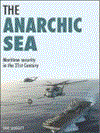

|
|
|
|
|
| Publication |
New Delhi, Pentagon Press, 2014.
|
| Description |
xxvi, 402p.Hbk
|
| Standard Number |
9788182747555
|
|
|
|
|
|
|
|
|
|
|
|
Copies: C:1/I:0,R:0,Q:0
Circulation
| Accession# | Call# | Current Location | Status | Policy | Location |
| 057803 | 359/SLO 057803 | Main | On Shelf | General | |
|
|
|
|
| 4 |
ID:
128735
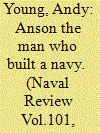

|
|
|
|
|
| Publication |
2013.
|
| Summary/Abstract |
Each year as we sit down to our beef, and toast the immortal memory, we celebrate the life and death of the admiral who epitomizes leadership and command at sea, Nelson is the ultimate expression of tactical and strategic skill in naval warfare. However, the truth of Trafalgar is for more complex. No mater what the brilliance of Britannia's God of War, the battle was won a full half century earlier by a man whom the modern royal navy has largely forgotten, but whose achievements laid the foundation for a century of global dominance and the establishment of an empire the like of which has never been seen since.
|
|
|
|
|
|
|
|
|
|
|
|
|
|
|
|
| 5 |
ID:
184082
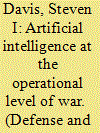

|
|
|
|
|
| Summary/Abstract |
Artificial intelligence (AI) is an emerging technology with widespread applications. The National Defense Strategy highlights the importance of AI to military operations for the United States to retain an advantage against its near-peer competitors. To fully realise this advantage, it will be necessary to integrate AI not only at the tactical level but also at the operational level of war. AI can be integrated into the complex task of operational planning most efficiently by subdividing it into its component operational functions, which can be processed by narrow AI. This organisation reduces problems to a size that can be parsed by an AI and maintains human oversight over machine supported decision-making.
|
|
|
|
|
|
|
|
|
|
|
|
|
|
|
|
| 6 |
ID:
150696
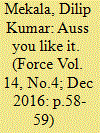

|
|
|
| 7 |
ID:
134018
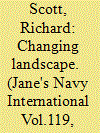

|
|
|
|
|
| Publication |
2014.
|
| Summary/Abstract |
In the run up to the Type 26 main investment decision, plans are taking shapes for a modernized complex warship capability on the Clyde. Yet there remains an element of uncertainty ahead of Scotland's referendum on independence.
|
|
|
|
|
|
|
|
|
|
|
|
|
|
|
|
| 8 |
ID:
179964
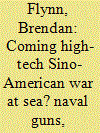

|
|
|
|
|
| Summary/Abstract |
In an era of cyber threats, drones and artificial intelligence, will the future of inter-state warfare at sea inevitably be high tech? This paper challenges assumptions about the ubiquity and importance of high technology in any future naval clash between China and America. While taken as a given that the most advanced weapons and platforms will be vital to such a conflict, both navies also employ legacy weapons and older technologies. A case study is offered here of medium calibre naval guns, seen on the very latest naval surface combatants of both China, the USA, and other major navies. Why do modern navies persist with such seemingly old weapons? To what extent are they likely to be important in any future conflict? It is argued that overly focusing on the latest high-tech weapons risks a type of naïve technological determinism and obscures how high- and low-tech weapons are often complementary. It is this synergy that requires greater understanding and attention. Moreover, relatively low-tech weapons like guns could be surprisingly relevant in the context of hybrid and amphibious warfare scenarios involving China and the USA, especially for the diplomacy of the “shot across the bows”.
|
|
|
|
|
|
|
|
|
|
|
|
|
|
|
|
| 9 |
ID:
002713
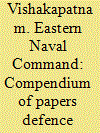

|
|
|
|
|
| Publication |
Vishakhapatnam, Eastern Naval Command,
|
| Description |
v, 182p.
|
|
|
|
|
|
|
|
|
|
|
|
Copies: C:1/I:0,R:0,Q:0
Circulation
| Accession# | Call# | Current Location | Status | Policy | Location |
| 034112 | 359.00954/COM 034112 | Main | On Shelf | General | |
|
|
|
|
| 10 |
ID:
132250
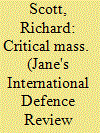

|
|
|
|
|
| Publication |
2014.
|
| Summary/Abstract |
The UK is investing in a next generation nuclear submarine propulsion plant to meet the needs of tis successor deterrent submarine programme.
|
|
|
|
|
|
|
|
|
|
|
|
|
|
|
|
| 11 |
ID:
132549
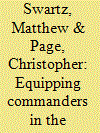

|
|
|
|
|
| Publication |
2014.
|
| Summary/Abstract |
Ever since the late half of the 1770s, the U.S. Navy's commanding officers have operated around the world and around the clock they do so often under austere conditions, always mindful of the danger posed by enemies and dynamic physical environment. Action-oriented Cos must exercise authority over their sailors and other assigned and attached combat forces in a prompt, sustained, and effective manner. The Navy's Information Dominance Corps and its partners work to ensure that these leaders have to the technological basis they need for today's military operations and warfighting scenarios, as sophisticated state and non-state actors seek to gain control of only the physical realm, but also the increasingly important cyber and electromagnetic (EM) domains. Our capstone technological capability, enabled by battlespace awareness and integrated fires, is what we call Assured Command and Control (C2).
|
|
|
|
|
|
|
|
|
|
|
|
|
|
|
|
| 12 |
ID:
048386


|
|
|
|
|
| Publication |
Hampshire, macmillan Press, 1999.
|
| Description |
vii, 287p.Hbk
|
| Series |
Problem in focus
|
| Standard Number |
033692233
|
|
|
|
|
|
|
|
|
|
|
|
Copies: C:1/I:0,R:0,Q:0
Circulation
| Accession# | Call# | Current Location | Status | Policy | Location |
| 041576 | 940.2/BLA 041576 | Main | On Shelf | General | |
|
|
|
|
| 13 |
ID:
049717
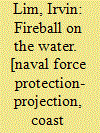

|
|
|
|
|
| Publication |
Singapore, Institute Of Defence and Strategic Studies, 2003.
|
| Description |
34p.
|
| Series |
IDSS Working Paper;53
|
|
|
|
|
|
|
|
|
|
|
|
Copies: C:1/I:0,R:0,Q:0
Circulation
| Accession# | Call# | Current Location | Status | Policy | Location |
| 047345 | 359.03/LIM 047345 | Main | On Shelf | General | |
|
|
|
|
| 14 |
ID:
129365
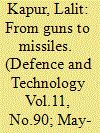

|
|
|
|
|
| Publication |
2012.
|
| Summary/Abstract |
Is an alumnus of the defence services staff college and the college of defence management, was directing staff at DSSC ad the college of naval warfare, Mumbai; has been the defence adviser at Muscat had held several important tri-service and naval appointment.
|
|
|
|
|
|
|
|
|
|
|
|
|
|
|
|
| 15 |
ID:
004367
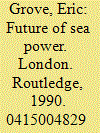

|
|
|
|
|
| Publication |
London, Routledge, 1990.
|
| Description |
xiii, 280p.
|
| Standard Number |
0415004829
|
|
|
|
|
|
|
|
|
|
|
|
Copies: C:1/I:0,R:0,Q:0
Circulation
| Accession# | Call# | Current Location | Status | Policy | Location |
| 032016 | 359/GRO 032016 | Main | On Shelf | General | |
|
|
|
|
| 16 |
ID:
133873
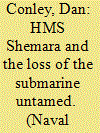

|
|
|
|
|
| Publication |
2014.
|
| Summary/Abstract |
Whilst exercising with the anti-submarine training vessel HMS Shemara, a converted yacht, the submarine HMS Untamed flooded and her entire crew perished. This article, underpinned by meticulous research completed by the historian Catherine Beale, narrates the event leading to the loss of the submarine. Shemara has recently completed a very extensive refit and is one of the few remaining seagoing Royal Navy WWII escort Vessels.
|
|
|
|
|
|
|
|
|
|
|
|
|
|
|
|
| 17 |
ID:
119504
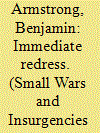

|
|
|
|
|
| Publication |
2013.
|
| Summary/Abstract |
Maritime interests in the twenty-first century are not immune to the growing number of irregular challenges and hybrid threats that have come to dominate land warfare. In order to better understand these challenges a study of naval history can help provide a vital foundation. In the early 1830s the United States Navy dispatched the frigate USS Potomac to Sumatra to investigate a pirate attack on the spice trader Friendship. Potomac's crew of sailors and Marines conducted a landing at the village Quallah Batoo and fought a pitched battle. As the navies of the world approach naval irregular warfare in the new century, studying past examples like Potomac's mission can help illuminate the principles of successful naval irregular warfare.
|
|
|
|
|
|
|
|
|
|
|
|
|
|
|
|
| 18 |
ID:
127243
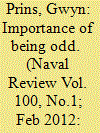

|
|
|
| 19 |
ID:
150694
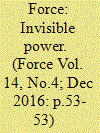

|
|
|
| 20 |
ID:
130882
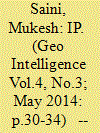

|
|
|
|
|
| Publication |
2014.
|
| Summary/Abstract |
Cyber warfare is very similar in nature to naval warfare. In international waters, navy encounters enemy warships, large merchant vessels, small merchant ships, fishing boats and guised surveillance ships from all directions. There are no borders to clearly establish that everything on the other side belongs to enemy. Though there are Sea-Lanes-of-Communication (SLOC) but two ports are actually on connectionless service and no ship is bound to follow SLOC. In cyberspace, IP address is the flag which every asset on the Internet displays but ruse is not uncommon. It is therefore necessary to identify the cyber assets positively in any cyber-conflict before any aggressive response is initiated. Wearing flag of convenience is common for sea vessels as well as cyber assets.
|
|
|
|
|
|
|
|
|
|
|
|
|
|
|
|
|
|
|
|
|